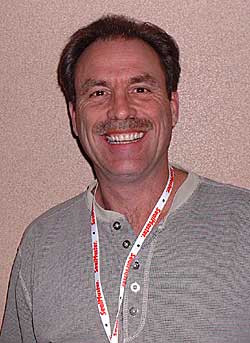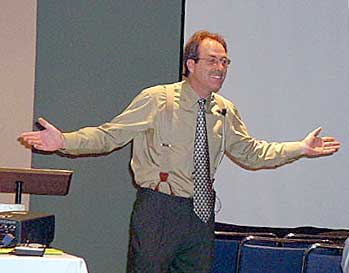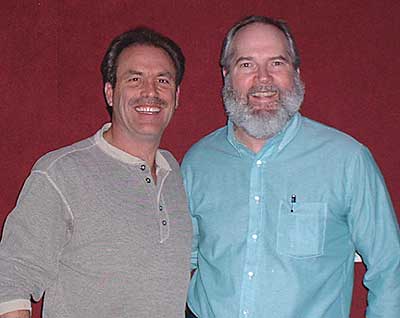Management Tools for Parking Area Sweeping |
Improve Sweeping Profits by Controlling Sweeping Costsby Gale Holsman, Jr. 
Gale Holsman, Jr. is from Kansas City, MO, and has been in the sweeping business since 1984. He has conducted periodic seminars for Pavement Magazine and National Pavement Expo since 1992. Holsman began his business with one Schwarze Supervac low-dumping sweeper. His company, American Sweeping, Inc., now has multiple locations throughout the Midwest where he offers full-service sweeping operations. My goal for this article is to review the importance of making money while operating your business. At the same time, I want to offer some insight into how the costs of operating your business can influence your profit. We are assuming, of course, that we are all in business to make money. With the proper training, planning -- and some luck -- these objectives can be achieved. However, what I find interesting is the number of contractors I meet from all walks of life who don't really understand this concept. It may surprise you to find out how little they -- YOUR COMPETITORS -- know about how a P&L statement works. Of course, we will assume you know what the letters P&L stand for. For the few of you who don't, it stands for PROFIT & LOSS. And if you're not using a P&L statement, you're probably only familiar with the 'L' side of it. My objective today is to show you some of the things you must understand to have an opportunity to stay on the 'P' side of the statement. INCOME vs. COST = PROFITThere are many factors one must take into consideration when looking at an overview of one's income statement:
The P&L is the road map to success. Without it, there is no way to keep track of your company's progress. This one form will allow you to gauge the productivity of your company, both positive and negative. I want to stress that it is very important to understand the bad along with the good. I know there are times when an owner will ignore the P&L when things are tough. This does not make the problems go away, and it makes it harder to solve issues that need to be addressed. The P&L will help you make sound decisions when things are going smooth or rough, depending on the situation. Your P&L will allow you to set goals as well as help you outline your business plan. First, let me ask you, what does PROFIT really stand for? After all, isn't this the real reason you are in business? You must decide what motivates you to show up for work each and every day. Is it enough just to build a business, regardless of profitability? I know that many of you believe "If I make more revenue, I'll make more money" is a true statement. The fact is, that's not always the case. 
Another question I want you to ask yourself is, "How do I know when enough is enough?" Only by asking yourself these type questions will you be able to understand what your true objectives are for you and your staff. And the only way you can answer these questions is to have a system set up to help you understand what is going on with your business. In my opinion, the best way to do this is through the use of your P&L statement. You will find that a good bookkeeper or a CPA can help you in this area on a regular basis. Some of us are fortunate enough to have both on our in-house staff. In any event, having systems in place -- based upon the ongoing analysis of your P&L statement -- will allow you to control what needs to be controlled at a moment's notice. Without such systems in place, you are like a rudderless boat without a compass, stuck without the knowledge of which direction you should be going and without the ability to go there. To make money, you must know where you have been, where you are and, most of all, where you are going. You can do this through the use of your P&L statement. Most of you will agree that there are basically two ways to make money in your business: either charge more for your services than what your operating costs are, or keep your costs down to less than what you are charging. Sounds like these are the same thing? They're not, and I will tell you why. It is relatively easy to derive your cost as a first step. Then, it should be easy to go out and charge more, right? Can't lose! Well, if you've been in this business for awhile, I know you understand the fallacy of that way of thinking. I'm sure we all wish it were that easy for us to be in business. We would all be rich with no worries in the world. We'd all be the Bill Gates' of the world! Unfortunately, it's more difficult than that. One of the main problem is those guys -- your competitors; you know the ones -- who are out there charging less for their services than they can afford, mostly because they don't understand their true long run costs. What to do about this is a good question, and one that's hard to answer. You certainly must make some hard decisions when a competitor bids at an amount where there is no profit left in the account -- especially if you have had an account for some time and now your competitor is about to take it for less money. Here are the two primary responses most of us think about:

There are no magic answers to these questions, but there are some rules we must live by if we are to stay in business. It is not easy to just take a pass on work, but some work you just can't afford to provide. However, how do you know which accounts you must pass on? How do you know whether or not you can drop your price on a particular account in order to keep it? How do you know whether you will still be making money on a bid, or if you are now on your current accounts, for that matter? Fortunately, that's easy, because the answers are all there in your P&L statement. That's the reason developing a P&L statement is so important, because you must know your costs! Here are some cost factors to keep track of that will help you control your expenses:
Remember, foremost, that you should be doing not only what you can afford but also what works best for you, in both your location and in terms of your business operation. Your best decision making tool will be your P&L statement. When you keep tight track of your operation using a P&L statement, you'll have the advantage of being able to make comparisons from year-to-year. These will become an invaluable measuring stick to let you know whether you are growing -- and what direction you are going. You may reach Gale Holsman at his Kansas City location by calling 816-966-1161. He is also available via email sent to gale@americansweeping.biz. |
© 2005 - 2012
|
Parking Area Sweeping Contents
|